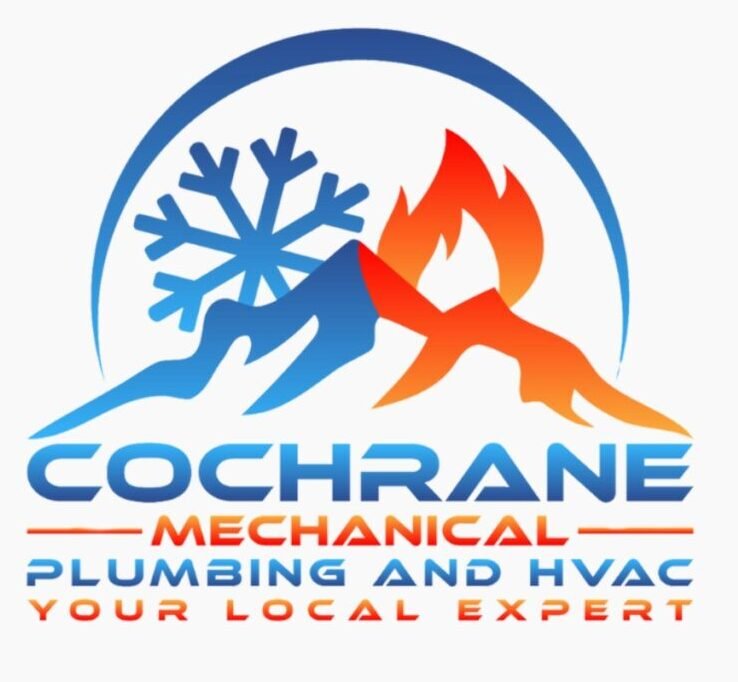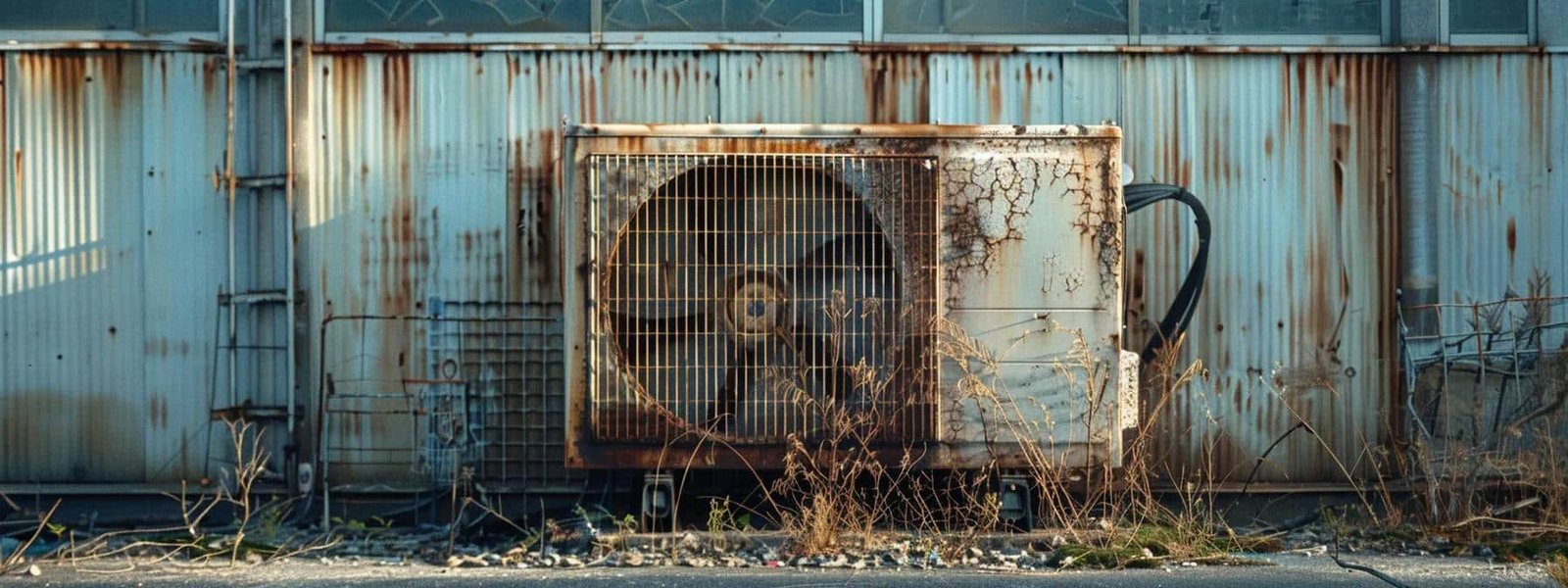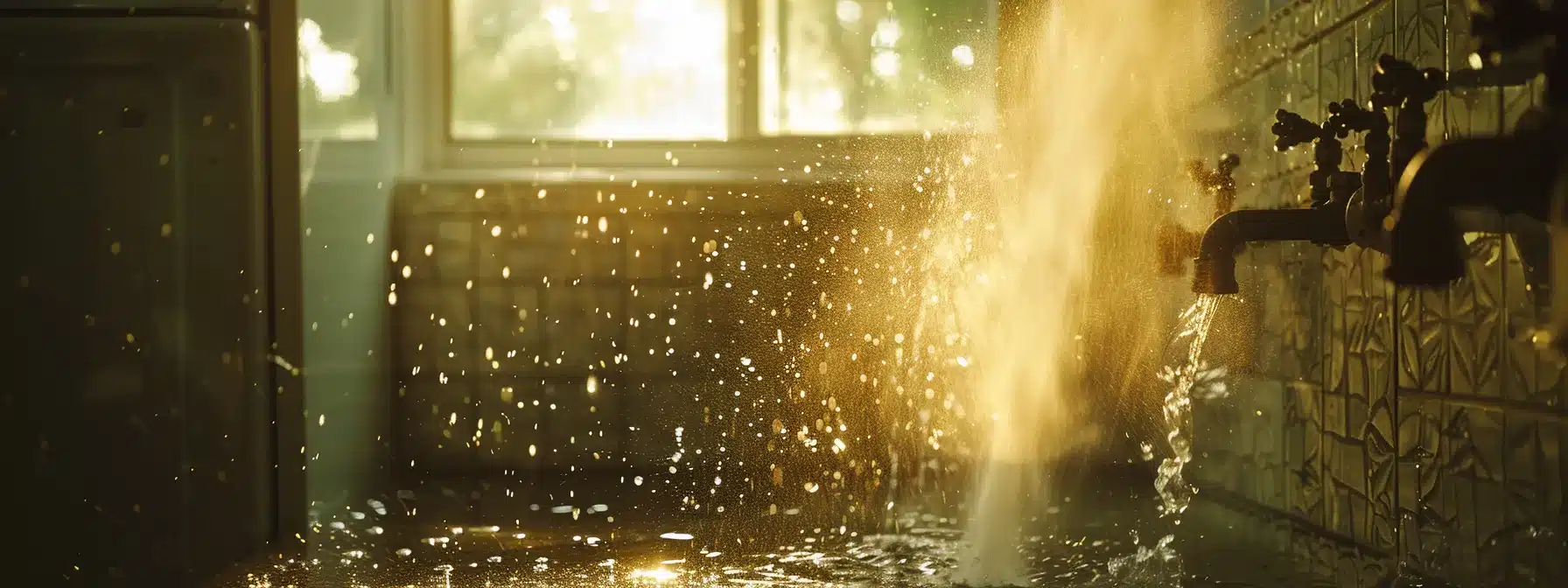
Are you grappling with the decision between a tankless water heater and a traditional hot water tank for your home? Deciding on a water heater is more than a matter of preference; it’s about efficiency, cost, and meeting your household’s needs. This guide delves into critical comparisons, such as energy efficiency and the upfront and ongoing costs associated with each option. You’ll also learn about maintenance requirements and how to gauge which system is best suited to your specific hot water demands. By the end of this exploration, you’ll possess the insight needed to make an informed choice that could significantly reduce your energy bills and provide you with a reliable source of hot water.
Essential Points to Remember
- Tankless water heaters offer efficiency and long-term savings despite higher initial costs
- Traditional tanks have a lower upfront price but may cost more in energy over time
- Considering household size and usage patterns is key to choosing the right water heater
- Maintenance and anticipated replacement costs are important long-term financial considerations
- Professional installation ensures safe, efficient operation and compliance with local codes
Compare Tankless and Traditional Water Heaters
Deciding between tankless and traditional water heaters requires understanding their distinct operations. I’ll guide you through the workings of tankless water heaters and elaborate on the functionality of traditional units. We’ll dissect the key differences to highlight the advantages and drawbacks of each. Informed by these insights, you’ll recognize which system best suits your usage patterns and needs.
Understand How Tankless Water Heaters Work
Tankless water heaters, often referred to as on-demand systems, provide hot water only as it’s needed. Unlike conventional tanks, these units house high-powered burners that rapidly heat water as it travels through a heat exchanger, delivering it straight to your taps without the need for storage. This method is renowned for its efficiency since it eliminates the standby energy losses associated with maintaining a reservoir of hot water.
I’ve noticed in my own home that the seamless operation of tankless water heaters can translate to considerable savings on energy bills. By heating water on the fly, these units typically consume 30 to 50 percent less energy than their traditional tanked counterparts, making them a smart choice for households conscious about both energy use and long-term cost effectiveness. However, it’s worth mentioning that the up-front investment can be substantial; it’s an important factor for many when making the decision.
Learn How Traditional Water Heaters Operate
Traditional water heaters, also called storage tank water heaters, operate by continuously heating and storing water in a large tank. This ensures a ready supply of hot water when it’s demanded, whether for a shower, doing dishes, or laundry. This style of water heater has a distinctive benefit in its ability to provide hot water at a high flow rate, although it can lead to higher energy use due to the constant heating process known as standby heat loss.
In my experience, households tend to choose traditional water heaters for their lower initial cost and their established reliability. However, over time they may not be as cost-efficient due to the continuous energy required to maintain the water temperature, which can affect your monthly bills. Furthermore, the space required to house a large tank could be a consideration for those living in smaller homes or looking to maximize living area.
Identify Key Differences Between the Two Systems
The fundamental distinction between tankless and traditional water heaters is their approach to heating and delivering hot water. Traditional models store and preheat a finite amount of water, which can be depleted during heavy usage, leading to a temporary shortage until the tank refills and reheats. On the other hand, I’ve observed that tankless units offer a continuous supply, as they heat water on demand, ensuring no interruption during back-to-back showers or simultaneous household tasks.
Another key difference lies in longevity and maintenance. From my experience, tankless water heaters tend to have a longer operational lifespan compared to traditional tanks, which can succumb to corrosion over time. Tankless models also require less space and can often be mounted on a wall, offering a space-saving advantage that I find particularly beneficial in smaller homes or apartments where every square foot matters.
Consider the Pros and Cons of Each Type
In my experience, tankless water heaters come with the advantage of potentially lower monthly energy bills due to their on-demand heating, which aligns with energy-conscious lifestyles. However, they demand a higher initial investment for installation, and their output might struggle to keep up with simultaneous demands of multiple appliances, which can be a drawback for larger households.
On the other hand, traditional water heaters impress with their ability to deliver a high volume of hot water with an immediate and lesser initial cost. What I’ve found is that this can be particularly advantageous for families who need a consistent supply of hot water during peak times. The downside, however, is increased energy consumption over time and the space required to install the tank, potentially making it less appealing for smaller living spaces.
Recognize Common Applications for Each System
In my professional assessment, tankless water heaters shine in smaller homes and for individuals who prioritize energy efficiency. They’re ideal when space is at a premium and when hot water needs are moderate and not simultaneous. For example, a couple in a compact urban condo would benefit from the endless hot water supply on demand without sacrificing valuable living space to a bulky tank.
Conversely, traditional water heaters are a mainstay in larger households where the demand for hot water is high and frequent throughout the day. Families benefit from the capacity to meet peak morning or evening routines, ensuring everyone enjoys a hot shower without waiting for water to reheat. Despite the space and energy demands, this solution remains a steadfast choice for its immediate availability and lower upfront cost.
Assess Energy Efficiency of Both Heating Systems
Evaluating the energy efficiency of tankless versus traditional hot water tanks is crucial for making an informed choice. I’ll examine their energy consumption, assess potential savings on energy bills, and weigh the environmental impact of each system. Understanding Energy Star ratings and certifications can further guide your decision-making. In doing so, you’ll gain valuable insights into which water heating solution is more cost-effective and environmentally responsible for your home.
Check Energy Consumption of Tankless Heaters
Investigating tankless water heaters, I’ve noted their significantly lower energy consumption compared to traditional models. These systems are designed to heat water directly as it flows to your faucets, circumventing the need to constantly heat and reheat a stored supply. This on-demand approach can lead to energy savings as hefty as 30 to 50 percent, making it a compelling choice for energy-savvy homeowners.
The practicality of tankless heaters is evident in my own utility bills, reflecting a decrease due to their intrinsic energy-saving operation. As these units only work when hot water is requested, the energy expended is directly proportional to use, avoiding the standby loss that plagues traditional tanks. Such efficiency qualifies many tankless models for Energy Star certification, an additional assurance for consumers looking to optimize their home’s energy profile.
Evaluate Energy Use in Traditional Water Tanks
When examining traditional hot water tanks from an energy use perspective, I’ve observed that their operation entails a continuous cycle of heating and reheating water to maintain a set temperature. This process, known primarily as standby heat loss, can contribute to higher energy consumption, particularly during times of low usage when the loss is not offset by demand. As a result, traditional units may not be as energy-efficient when compared to the on-demand nature of tankless heaters.
In my professional experience, traditional hot water tanks typically have a lower Energy Star rating, reflecting their tendency to consume more energy overall. Households opting for these models need to consider the ongoing energy costs tied to maintaining a reserve of hot water. While these tanks present an affordable upfront cost, the long-term implications on energy bills could be substantial, especially for those sensitive to monthly expenses and environmental impact.
Calculate Potential Savings on Energy Bills
In examining the potential savings on energy bills, I’ve calculated that tankless water heaters can offer significant cost reductions over the long term. Based on efficiency studies and my own utility bills, I’ve observed the energy costs for tankless units can be up to 50 percent lower than those of traditional water heaters, which is attributable to their lack of standby energy loss. Deciding to invest in a tankless system can therefore be financially savvy, offering a return on investment through sustained lower operating costs.
While traditional hot water tanks may have a lower initial price point, the ongoing energy expenses can quickly accumulate. In my professional assessment, households that implement traditional water heaters should anticipate larger energy bills, potentially up to twice as much as what might be incurred with a tankless system, especially during periods of lower usage. Factor in this consistent financial commitment when evaluating hot water solutions and consider the impact of your choice on both your wallet and energy consumption patterns.
Consider Environmental Impact of Each System
In assessing the environmental impact of tankless versus traditional hot water tanks, I’ve seen firsthand that tankless models align more closely with eco-friendly practices. The heightened energy efficiency reduces greenhouse gas emissions by minimizing the burning of fossil fuels, which is a crucial step for those looking to reduce their carbon footprint. I’m conscious of the fact that every reduction in energy consumption not only benefits my budget but also contributes to a healthier environment.
Even though traditional water heaters can be less efficient, opting for models with better insulation and lower standby heat loss can mitigate some environmental drawbacks. My experience tells me that maintaining these tanks in optimum condition, including regular servicing and prompt repairs, can indeed lessen their environmental impact. Encouragingly, advances in technology are improving the efficiency of traditional systems, closing the gap in the eco-conscious choice between tankless and traditional water heaters.
Review Energy Star Ratings and Certifications
Energy Star ratings, a symbol for energy efficiency, serve as a critical guide for comparing tankless and traditional hot water tanks. In my professional experience, I’ve observed that tankless models often boast higher Energy Star ratings, signifying their superior efficiency in converting energy into hot water. This is a pivotal criterion for homeowners who consider both operational cost and environmental sustainability when selecting a water heating system.
For those less familar, Energy Star is a program that certifies appliances that meet strict energy efficiency guidelines set by the U.S. Environmental Protection Agency and the Department of Energy. From a hands-on perspective, I advise clients to look for this certification as an assurance of quality and energy savings. Choosing an Energy Star-certified water heater, whether tankless or traditional, ensures you are investing in a product designed to save energy, reduce bills and lessen the environmental footprint over time.
Evaluate Installation Costs and Requirements
As we evaluate installation costs for water heaters, it’s key to estimate the upfront investment for tankless systems and assess the expenses tied to installing traditional tanks. We’ll delve into the potential need for additional equipment or upgrades, weigh the installation time and complexity, and consider the long-term financial implications of each system. Coming up, I’ll provide insights into the true cost of water heater installation to help you make an informed choice for your home’s needs.
Estimate Upfront Costs for Tankless Systems
When I undertook the installation of a tankless water heater in my home, the initial costs proved to be higher than those for traditional tank models. The purchase price generally ranges, and installation may require modifications to your existing plumbing and electrical systems. These added expenses for upgrading infrastructure can accumulate, making the up-front financial commitment something to contemplate carefully when considering a tankless system.
Despite these increased initial expenditures, I’ve recognized that investing in a tankless water heater can lead to considerable energy savings over time. To ensure a smooth installation process, it’s also prudent to factor in potential costs for specialized labor or additional components like venting materials. I advise allocating a budget that accommodates these nuances, as they significantly influence the overall cost-effectiveness of a tankless water heating solution for your household.
Determine Installation Expenses for Traditional Tanks
From my analysis, the installation costs for traditional hot water tanks are characteristically less intimidating than those for tankless systems. Securing a standard tank heater and integrating it into your home’s existing layout generally avoids the need for substantial alterations to plumbing or electrical infrastructures, which helps keep these initial expenditures more manageable. Clients value these installations for their predictability, as costs are often transparent and upfront, with fewer variables to consider.
I’ve encountered many homeowners who find comfort in the straightforward nature of installing a traditional water tank. It’s typically a routine process for experienced plumbers and doesn’t demand the specialized knowledge that tankless system installations might require. This can translate to reduced labor costs, shorter project times, and a quicker path to enjoying your home’s hot water supply, ensuring the installation phase aligns with budget-conscious considerations and practicality.
Identify Additional Equipment or Upgrades Needed
As I navigated the installation of a tankless water heater, I learned that certain homes might require significant upgrades. These can include larger gas lines for adequate fuel supply, advanced venting systems for safety, and potentially upgraded electrical panels to handle the load. Considering these additional requirements beforehand ensured there were no surprises during my upgrade, which is something I always inform my clients to prepare for.
For traditional water heaters, installation can frequently utilize existing connections, but it’s crucial to account for potential ancillary equipment. This might encompass expansion tanks to mitigate pressure, drip pans to protect against potential leaks, or replacement parts for aged plumbing that could compromise the new system. Being prepared for these additional costs was beneficial for me, and it’s advice I pass on to ensure you’re not caught off guard financially.
Compare Installation Time and Complexity
In my expertise, installing a tankless water heater usually involves a more complex and lengthy process than setting up a traditional unit. Due to the specific requirements of tankless systems such as upgraded gas lines and special venting, the entire setup can take a full day or even require an additional visit by a certified technician. This aspect is critical to consider for those needing immediate hot water solutions or facing time constraints.
On the contrary, the installation of a traditional hot water tank is often more straightforward, given the pre-existing frameworks in most homes for such systems. I’ve experienced that professionals can typically install a traditional water heater within a few hours, as the process leverages current plumbing setups. Homeowners should bear in mind this difference in time and complexity, as it heavily impacts the installation schedule and immediate availability of hot water post-installation.
Consider Long-Term Cost Implications
In assessing the long-term cost implications of water heaters, it’s essential to look beyond the initial outlay. I’ve found that while tankless water heaters present a heftier up-front cost, their reduced energy consumption can lead to significant savings over time, offsetting the initial investment. Homeowners should consider this when factoring in the overall cost effectiveness of their water heating system.
On the other hand, although traditional hot water tanks may come with a lower purchase price, they tend to result in higher energy bills due to less efficient operation. I’ve experienced this first-hand, and it’s crucial for potential buyers to reckon with the cumulative impact these ongoing costs can have on household finances across the lifespan of the unit.
Examine Maintenance Needs and Lifespan Differences
Maintenance and longevity are crucial when choosing a water heater. I’ll highlight the maintenance needs for tankless heaters and the routine tasks associated with traditional tanks. We’ll also look at the expected lifespans of both tankless systems and traditional tanks, as well as what to plan for regarding maintenance and replacement costs to ensure you’re well-informed about the long-term implications of your investment.
Understand Maintenance Needs for Tankless Heaters
Despite the energy efficiency tankless heaters offer, I’ve learned they’re not free from maintenance requirements. Regular descaling is needed, particularly in areas with hard water, to prevent mineral build-up that can affect performance and longevity. I advise my clients to plan for an annual check, which can help maintain the unit’s efficiency and catch any potential issues early on. This proactive approach not only protects their investment but also ensures continuous on-demand hot water without unexpected disruptions.
Diving deeper into maintenance, I’ve discovered that tankless heaters often require specialized knowledge for upkeep. It’s important to engage qualified professionals to handle these tasks, ensuring that the intricate components are serviced correctly. From my experience, this can lead to slightly higher maintenance costs over time, yet is a critical step in preserving the system’s longevity and reliability — a factor worth considering for any homeowner eyeing a tankless water heating solution.
Learn Maintenance Tasks for Traditional Water Tanks
In my experience with traditional water heaters, maintenance is straightforward but essential to ensure the longevity of the unit. Draining and flushing the tank annually to remove sediment that can build up and reduce efficiency is a key task. Inspecting the anode rod to protect against corrosion and checking the pressure relief valve for proper operation are also critical steps that should not be overlooked to maintain water heater performance.
I’ve also found that being vigilant about signs of wear or leaks can save homeowners from costly repairs down the line. Regular visual inspections of the tank can reveal any immediate issues that require attention. It’s these simple but effective maintenance practices that significantly contribute to extending the lifespan of traditional hot water tanks, providing reliable hot water to countless homes.
Assess Typical Lifespan of Tankless Systems
In my professional understanding, tankless water heaters boast a considerable lifespan advantage, typically lasting over 20 years with proper care and maintenance. These systems, unhindered by tank corrosion concerns, can outlive traditional water tanks by a good margin. It’s this longevity that serves as a selling point for many homeowners, factoring into the return on their investment and providing peace of mind about their hot water service for years to come.
I’ve witnessed firsthand the durability of tankless systems, attributable to their less corrosive operation and their design that allows for the replacement of individual parts. Unlike traditional tanks that may need complete replacement upon failure, tankless units offer a more modular repair approach. It’s this aspect of tankless heaters that I highlight to clients considering the long-term financial and practical benefits of their hot water heating options.
Understand Lifespan Expectations for Traditional Tanks
In my professional experience, I’ve observed that the typical lifespan of traditional hot water tanks ranges from 10 to 15 years. Their longevity often depends on regular maintenance, such as flushing the tank to prevent sediment accumulation and replacing components like the anode rod to ward off corrosion. Consistent upkeep is vital to extend the life of these tanks, ensuring homeowners can rely on their investment for a reasonable period.
Realistically, when dealing with traditional tanks, I advise clients to plan for eventual replacement within that decade or shortly thereafter. Factors such as the quality of water, the design of the unit, and adherence to routine maintenance play pivotal roles in the overall lifespan. A proactive approach towards maintenance not only sustains the heater’s efficiency but also circumvents the inconvenience of unforeseen breakdowns, granting peace of mind to the user.
Plan for Maintenance and Replacement Costs
In my professional opinion, planning for the maintenance and replacement costs is imperative for both tankless and traditional hot water tanks alike. For tankless units, despite their longer lifespan, homeowners should budget for annual servicing to mitigate the build-up of minerals from hard water which could impact efficiency. While these costs can be offset by longer intervals between replacements, it’s crucial to account for them to maintain uninterrupted hot water service.
Conversely, with traditional tanks, I’ve found that while the maintenance tasks may be more straightforward, the frequency of replacement is higher. Homeowners should anticipate the cost of a new hot water tank every 10 to 15 years, factoring in the potential for ancillary repairs or upgrades that could arise from regular wear and tear. Having a financial strategy in place for these eventualities ensures a balance between cost management and consistent hot water access.
Determine Which System Fits Your Hot Water Demand
Selecting the right hot water system is pivotal for household comfort and efficiency. In my assessment, evaluating your home’s hot water usage patterns will drastically influence which system—tankless or traditional—aligns with your needs. We will explore the flow rates and capacity crucial for tackling peak demand times, the ramifications of having multiple bathrooms and appliances, and how to ensure a water heater can adapt to potential changes in your household’s demands. Concentrating on practical and future usage will lead to a choice that meets your hot water needs both now and in the years ahead.
Analyze Your Household’s Hot Water Usage Patterns
In evaluating your home’s hot water needs, consider patterns such as the number of family members, daily routines, and peak usage times. For example, I’ve seen that homes with multiple bathrooms and occupants benefit from a traditional tank’s capacity during concurrent morning preparations, whereas smaller households may prefer the efficiency of a tankless heater.
Reflecting on my own usage, I appreciate how tankless units offer endless hot water without the wait, ideal for tasks spaced throughout the day. Yet, it’s critical to assess whether the heater’s flow rate can cope with simultaneous demands, especially in larger homes where multiple appliances might be in use at the same time.
Understand Flow Rates and Capacity Needs
In my professional perspective, assessing the flow rates and capacity needs of hot water systems is critical for household harmony. Tankless water heaters provide a consistent flow rate, vital for maintaining hot water during continuous use, but they may struggle to keep up if multiple outlets are used simultaneously. On the other hand, I’ve seen traditional tanks reliably deliver a higher volume of water, essential for peak times in larger households with numerous simultaneous demands.
I’ve personally experienced the convenience of tankless units in my daily life; however, their flow rates are measured in gallons per minute (GPM), which can be a deciding factor for homes with high concurrent water usage. In contrast, traditional tanks offer a pre-determined capacity, typically ranging from 30 to 80 gallons, ensuring that a set volume of hot water is readily available. This feature is particularly beneficial when family members need to shower back-to-back, run the dishwasher, and do laundry – all within a short time span.
Match System Performance With Peak Demand
Matching the system performance to peak demand is critical in avoiding the inconvenience of cold showers or insufficient hot water during high-use periods. In my professional judgment, homeowners should closely evaluate their peak hot water usage—typically in the mornings and evenings—and choose a system that can meet this demand efficiently. For instance, a traditional hot water tank may be better suited for houses with multiple occupants who have overlapping hot water needs.
Conversely, I’ve observed that tankless water heaters excel in providing continuous hot water, which can be ideal for homes with staggered usage patterns. However, if a tankless system is under consideration, ensure it boasts a flow rate that can support your household’s peak hot water demand, especially if your lifestyle includes simultaneous hot water usage across various fixtures.
Consider the Number of Bathrooms and Appliances
In my experience, the number of bathrooms and appliances in your home plays a vital role in determining whether a tankless or traditional hot water tank is the optimal choice. Homes featuring multiple bathrooms, high-end kitchens, and appliances such as washing machines and dishwashers that rely on hot water may exceed the capability of a single tankless unit due to their cumulative demand. In such scenarios, a traditional tank with a larger capacity is often more adept at meeting the simultaneous hot water needs without faltering.
Conversely, for homes with fewer bathrooms and less frequent simultaneous appliance use, the tankless water heater shows its strengths. I’ve found that these systems are perfectly suited for providing hot water to households with more modest needs, delivering energy efficiency without the bulkiness of a large tank. Homeowners should evaluate their specific water usage patterns carefully to ensure their final decision aligns with their daily requirements and offers continual hot water comfort.
Assess Future Changes in Hot Water Needs
For those considering their home’s future hot water demands, envisioning the long-term is fundamental. A tankless water heater, with its scalability, is an ideal match for growing families or homeowners planning to expand their living space. I’ve noticed that the adaptability of tankless systems can conveniently accommodate increased hot water usage without the need for a larger unit, inherently future-proofing your home against evolving needs and lifestyle changes.
Conversely, reflecting on a traditional water heating system’s limitations is necessary, especially as it relates to capacity. If a household expects more occupants or increased hot water usage, planning for a system upgrade could be inevitable. My advice to clients is to always weigh the potential of having to upgrade a traditional tank against the continuous benefits of a tankless water heater, which often presents a more consistent solution over time without the need for replacement to meet increased demand.
Select the Ideal Hot Water System for Your Needs
As we delve into selecting the ideal hot water system, summarizing the key factors for your unique situation becomes crucial. I’ll help you weigh the advantages and disadvantages of both tankless and traditional tanks, thereby tailoring the choice to your needs. It’s also important to consult with a professional installer for expert advice. Together, we will map out the necessary steps for installation and ensure a smooth transition to your new hot water system.
Summarize Key Factors in Your Decision
In my professional judgment, summarizing the key factors in choosing between tankless and traditional hot water heaters boils down to evaluating your household’s specific needs. Consider peak hot water usage times, the number of appliances requiring hot water, and the layout of your home to discern whether the continual, on-demand nature of tankless heaters or the high-capacity reservoir of traditional tanks will serve you best. These considerations are crucial in ensuring you don’t face the inconvenience of supply shortages during high demand periods.
An additional angle to consider is the impact of installation and long-term costs on your decision. For me, reflecting on the upfront investment alongside the expected energy savings helped in directing my choice. Realistically assess whether the higher initial expense of a tankless heater is feasible for your budget, keeping in mind that it may very well lead to substantial savings in the long run. This financial foresight, coupled with understanding your usage patterns, is key to selecting an efficient and cost-effective hot water system tailored to your home’s needs.
Weigh the Pros and Cons Based on Your Situation
Assessing the pros and cons of tankless versus traditional hot water tanks can be quite personal, depending on your household’s specific demands. In my home, the tankless heater’s energy efficiency and space-saving profile have been beneficial, counterbalancing the higher installation cost with long-term utility savings and a minimalist footprint. Yet, for homes with higher water usage, especially during peak times, the lower initial investment and robust capacity of traditional tanks might undercut the long-term efficiencies of going tankless.
Analyzing your water heating needs requires a holistic view of your current situation and future expectations. I’ve found tankless systems to be a fitting match for our lifestyle, with considerable energy savings and a reliable supply of hot water catering to moderate, non-simultaneous use. However, for larger families or those with heavy-duty water needs, traditional tanks can offer the uninterrupted high-volume supply that is indispensable during those hectic mornings or evenings. Making the choice ultimately rests on balancing the practicality of meeting your daily hot water demands with the economic implications of installation and operation costs.
Consult With a Professional Installer
Consulting with a professional installer can make the transition to your new hot water system seamless and tailored to your unique requirements. In my experience, certified technicians possess the expertise to evaluate your home’s layout and hot water demands, ensuring the selected system, be it tankless or traditional, is installed with precision and functions optimally. Their knowledge of local building codes and the intricacies of water heater installation is invaluable, safeguarding your investment and providing peace of mind.
I’ve found that a specialist’s guidance is particularly beneficial when assessing the compatibility of a tankless heater with your home’s existing infrastructure. Installers can identify if additional upgrades like enlarged gas lines or electrical improvements are necessary, ensuring that the system’s installation complies with safety standards and operates at peak efficiency. By leveraging their insight, you avoid unforeseen issues and costs, ensuring a smooth and cost-effective hot water system upgrade.
Plan Your Next Steps for Installation
Planning the next steps for your water heater installation demands attention to detail and a focused approach. In my professional journey, I’ve come to appreciate the need for a detailed assessment of your home’s current infrastructure to ensure compatibility with your chosen water heating system. Whether opting for a tankless unit or a conventional tank, addressing the specifics, such as ensuring adequate ventilation for gas-powered models or evaluating your home’s electrical capacity, is a task I prioritize to avoid delays and ensure a hassle-free installation.
Ensuring a smooth installation process also involves scheduling with a reliable, licensed professional who can efficiently handle either tankless or traditional hot water tank installations. I make it a point to confirm their availability well in advance, thus aligning with your household’s schedule to minimize disruption. Equipped with first-hand knowledge on installation intricacies, I’ve learned the value of choosing an installer with a proven track record of success, one who will not just install the new system but also guide you through the proper maintenance to maximize its longevity and performance.
Prepare for a Smooth Transition to a New System
Ensuring that your home is ready for the installation of a new hot water system, whether tankless or traditional, is something I’ve learned to be critical for a smooth transition. It’s essential to communicate openly with your installer about the specifics of your home’s existing setup. This conversation should cover water pressure, gas or electrical supply, and the condition of current pipes, setting the stage for a successful installation without unforeseen hitches.
I always advise homeowners to prepare for the water heater swap by understanding the work scope and any disruption it may cause. Clearing the area, securing pets, and planning for temporary water unavailability can ease the transition process substantially. With an experienced installer at the helm, a keen eye on preparation details, and these practical steps, transitioning to your chosen hot water system can be as seamless and efficient as possible.
Frequently Asked Questions
What are the main differences between tankless and traditional water heaters?
Tankless water heaters provide hot water on demand without a storage tank, leading to energy savings and endless hot water, whereas traditional units store and continuously heat water, consuming more energy.
How does energy efficiency compare for tankless and traditional heaters?
Tankless water heaters typically boast higher energy efficiency than traditional tank models by heating water on demand and reducing standby energy losses.
What should I expect in installation costs for each type of water heater?
Expect to pay between $750 to $2,000 for installing a tank water heater, and $3,000 to $4,500 for a tankless system, varying with unit and labor costs.
Do tankless water heaters have a longer lifespan than traditional ones?
Tankless water heaters generally offer a longer lifespan, reaching up to 20 years, surpassing traditional tank models that typically last 10-15 years.
How do I determine the best hot water system for my household demand?
Selecting the ideal hot water system hinges on consumption, energy efficiency, available space, and fuel type—evaluate usage patterns and consult a plumber for a tailored recommendation.
Conclusion
Choosing between tankless and traditional hot water tanks significantly impacts household energy efficiency, long-term costs, and daily convenience. Tankless units prioritize energy savings and space efficiency, ideal for smaller households and moderate usage, while traditional tanks offer robust capacity, best suited for larger homes with high concurrent water demands. Careful consideration of installation and ongoing maintenance costs, alongside an assessment of hot water usage patterns, ensures the selected system meets your specific needs effectively. This guide empowers homeowners with the necessary insights to make an educated decision, balancing comfort, cost, and conservation in their water heating choices.







